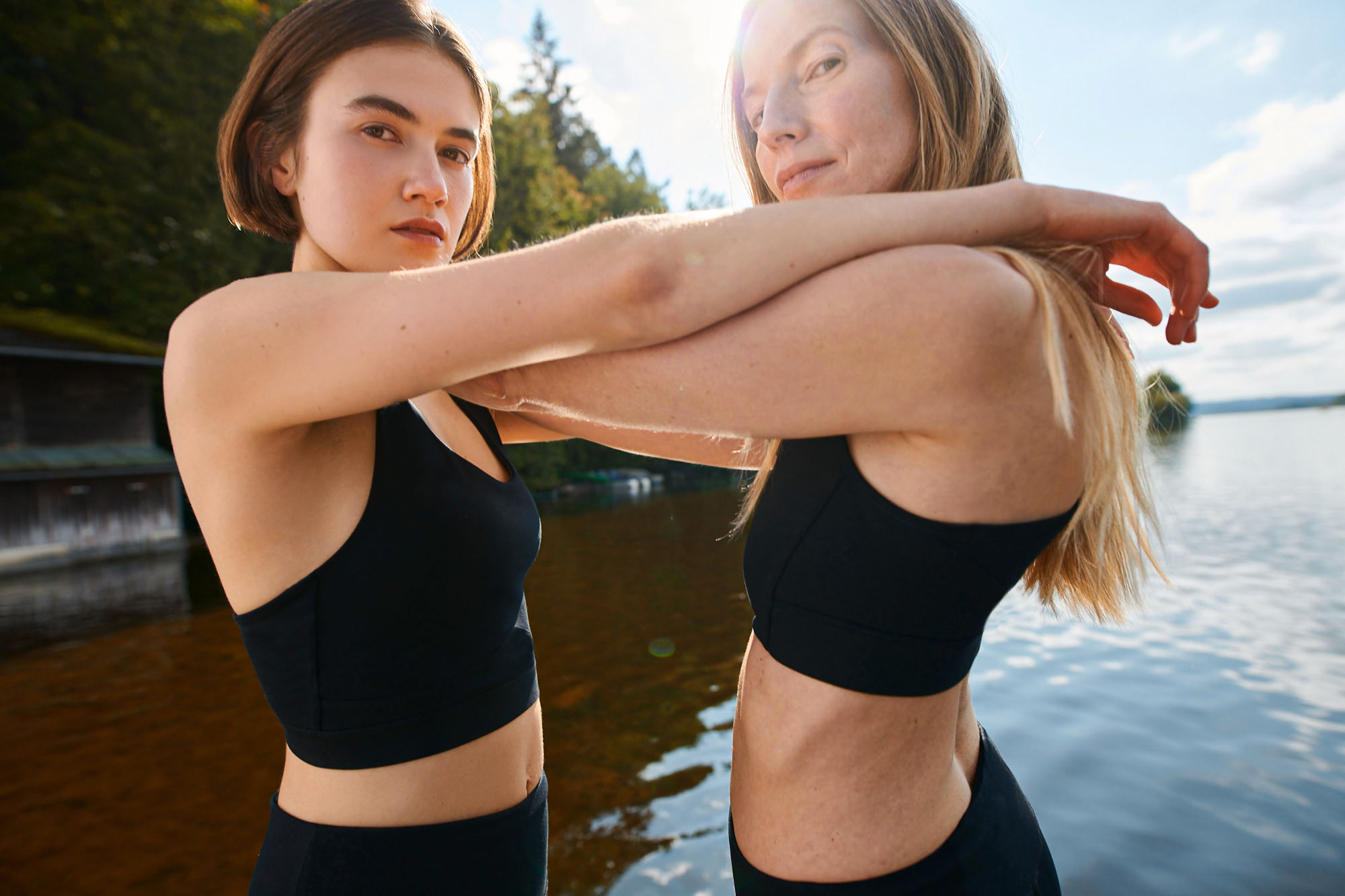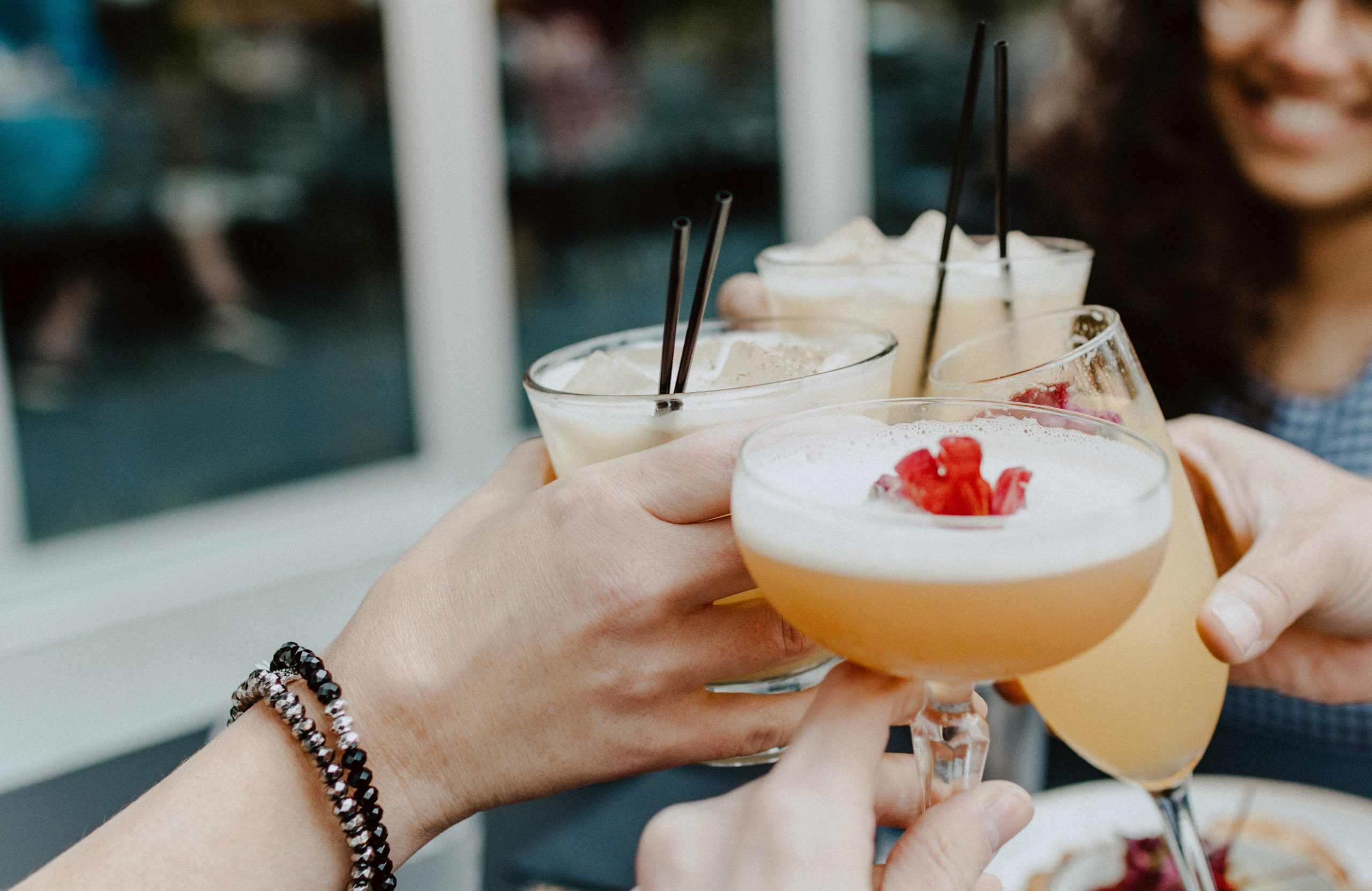Vivobarefoot’s vision is to reconnect people with the planet through their regenerative footwear, inspiring a world with less padding and more feeling. We talk to Vivobarefoot’s founders, cousins Galahad and Asher Clark about the brand that walks its talk.
Tell us why you founded Vivobarefoot.
In 2002, we were inspired by a friend who was trying to stop rolling his ankles when he played tennis by slicing off the soles of his shoes and stitching on a racket cover instead. We are seventh-generation cobblers, so we have feet in the blood, but we also realised modern footwear has taken a weird turn that has nothing to do with anatomy, biomechanics or how we’re supposed to move.
Our first barefoot forays were about barefoot technique and running, but now we want to make barefoot a part of everyday life for everyone, not only athletes or barefoot fitness fanatics.
What is ‘barefoot footwear’ and why is it good for our feet?
Barefoot footwear keeps feet as close to bare as possible, protecting them only from climate and terrain. Barefoot is how our bodies evolved over millions of years. Our feet are awesome bio-mechanical wonders but modern footwear is screwing them up. That’s why all Vivobarefoot footwear is ultra-thin soled, wide and bendy, so feet can be their natural, healthy, barefoot best.

It feels great, but the science behind barefoot is solid: Vivobarefoot footwear has been proven to increase foot strength and flexibility by 60% over six months. Children who grow up largely barefoot have wider feet (a sign of strength) and fewer fallen arches. They also do better when it comes to balance and motor skills. Strong, healthy feet are a great foundation for overall health and physicality, and we all know how important this is for our mental health too.
How are normal shoes damaging our feet?
95% of babies are lucky enough to be born with all the potential to grow with naturally healthy feet. And yet, by the time we grow up, 75% of Americans complain of debilitating foot issues. What’s happening? Sure, there are many issues to do with our sedentary lives and unhealthy habits – but how does this affect our feet? Feet get cooped up in normal shoes that aren’t even shaped like feet.
Squashed and squished out of their natural shape, feet are weakened and turned into a dysfunctional shoe shape. Who would want this? (Apart from those making millions selling the trendy trainers and stiff shoes, of course…). 23 billion pairs of shoes are made every year, and most end up in landfill within a year. Shoes don’t just damage our feet, they’re choking the planet too.
Should we all stop wearing modern shoes and switch to barefoot shoes?
Hey, we don’t want to boss people around! But the science is pretty clear: everyday shoes – even trainers and flip-flops – are deforming our feet. And this starts in childhood, preventing kids from growing up with their full potential for healthy, natural movement and physicality.
We think people should start by just taking their clunky, heavy shoes off and just hanging out barefoot a bit more.
How does it feel to walk in Vivobarefoot shoes compared to other modern shoes?
The key word here is FEEL – in Vivobarefoot your feet are going to feel. This means it might take a while to ease into wearing them. There will be muscles and ligaments in your feet that will need some waking up and reactivating again. Think of how an arm or an ankle looks after a cast is removed. Imagine normal, modern shoes are like foot casts – so building up that natural strength will take time.
For kids it’s way easier; they haven’t had a lifetime of these foot casts and they love all the extra balance and agility Vivos give them straight away. We always say walk before you run, and if you don’t want to run, don’t sweat it!
Not that many people spend all their waking hours running anyhow – but we do spend a lot of time moving, walking and standing and the more barefoot time we get, the better. It’s not a race and there are no prizes, but we’re sure you’ll enjoy the journey.

Can you tell us more about the sensory connection between the feet and the brain?
Our feet are not too different to our hands. In both, hundreds of thousands of sensitive nerve endings are waiting to send vital sensory messages to the brain. But if you send your kids out to play in boxing gloves, they’re not going to have much fun. The same goes for feet all cooped up in traditional shoes and sneakers – they can’t feel!
When feet can feel, and sensory messages are whizzing around the body, you can feel it. Movements become more nimble and agile and balance improves. That’s why bodybuilders and ballet dancers love wearing Vivos, they know how important it is for their feet to feel.
It’s why kids love them too. They instantly find their feet and this helps them run, climb, dance and play… which is what kids are supposed to do! We must warn you, you will struggle to get your kids to wear stiff, normal shoes once they’ve worn Vivos. They’re going to love growing wild.
What materials do you use in Vivobarefoot shoes?
We have a range of materials to suit all sorts of activities and needs. We also invest a lot of time and energy into developing new, environmentally-friendly materials like the algae-based BLOOM foam we use in our Ultra range. A lot of our footwear is leather-free and vegan, made from recycled PETs.
We also make footwear from sustainably and ethically sourced natural materials like Woolmark wool, BCI cotton and Wild Hide leather from small-scale, cage-free cattle. All our footwear is durable and fixable. We even have a re-sale platform, www.revivo.com, to keep our products on people’s feet and off landfill for as long as possible.
Only working towards being truly regenerative will give us and the planet a fighting chance. There’s no point calling ourselves barefoot if we don’t take this approach. With every single thing we do we measure how our actions take us closer to being fully regenerative, a net positive for people and the planet and not simply cluttering up the world with more ‘stuff’ – no matter how sustainable it might be.
Being a B-Corp business is part of this, as is innovating and investing in new materials and processes and supporting indigenous footwear traditions and their craft. We’re radically open and transparent about this process because we get that this isn’t a competition – it’s a fight for our collective future. We know our customers believe this too and we’re fortunate to have them as collaborators.
What is your bestselling shoe?
It has always been Primus, our laidback, stylish everyday sport and leisure shoe. Then 2020 happened and everyone went Tracker! Tracker is our back-to-nature hiking boot, but it’s nothing like a traditional, heavy, clunky hiking boot you need to ‘break in’. The Tracker is very lightweight, bendy and grippy and made from super soft and durable Wild Hide leather – though we offer vegan options too.
Overall, there is an everyday shoe for everyone. We’re hoping that in the future, our footwear will become the norm for children to wear to school everywhere and be the only healthy and obvious choice for good development and learning.
Tell us about the success you’re having with Autistic children experiencing this brand.
We’ve known for a long time that many children with ASD (Autism Spectrum Disorder) struggle with the sensory deprivation of normal shoes and we believe our footwear is a great alternative.
We’ve started reaching out and speaking to parents of children with Autism because we want these children to try our shoes and we want to hear from them about their experiences. We want to learn from them. We have a few projects in the pipeline focusing on how ASD and sensory processing disorders affect children with regard to footwear.
We’re currently taking part in and supporting a ground-breaking research project by the Carlow Institute of Technology in Ireland on how footwear impacts the lives of children with ASD, which is extremely exciting for us.
Where did the thinking come from regarding the shoes, with Autistic children in mind?
It started happening organically. Several parents of children with Autism started getting in touch to tell us how our footwear has impacted their daily lives. It was a lightbulb moment for us but it makes total sense.
We’re making footwear that keeps all this amazing sensory input, which is exactly what most of these children specifically need. We’re learning a lot, we’re grateful for all the feedback we’ve received from so many parents of children with Autism. We hope we can find a way to continue to have a positive impact in the future.
For all the latest news and product information head to the Vivobarefoot website and be sure to follow the guys on Instagram.







